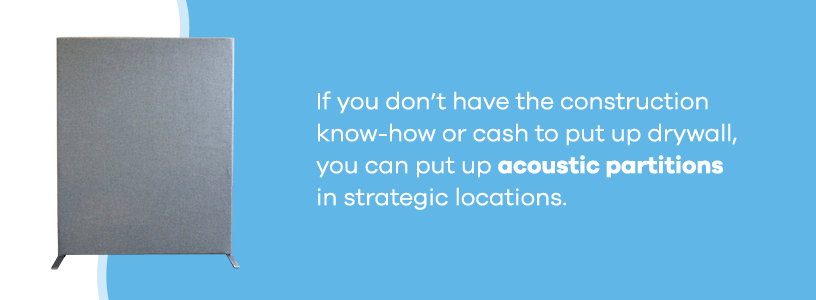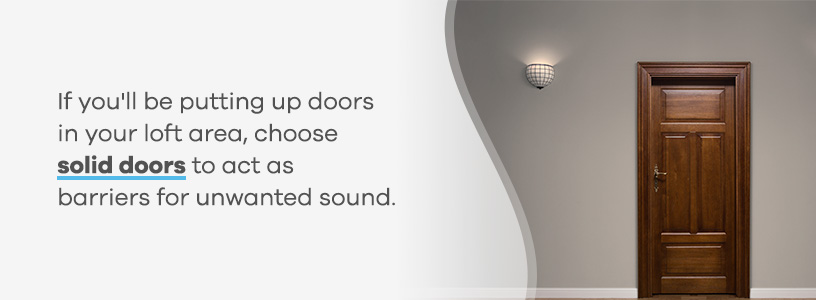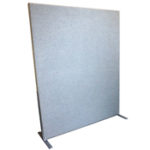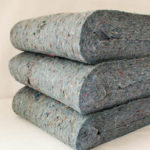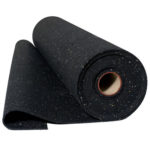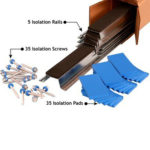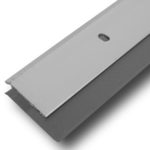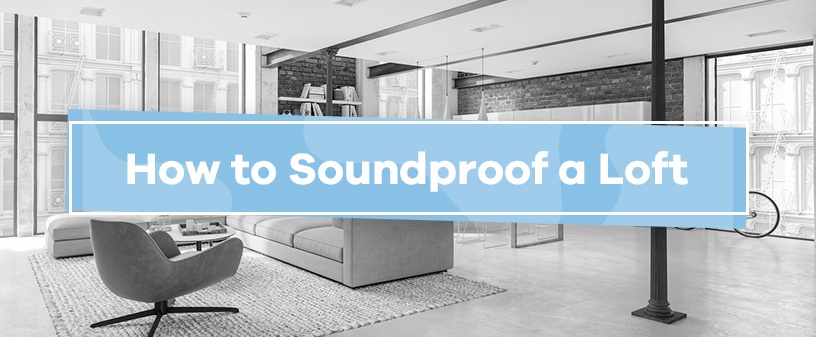
Table of Contents:
Loft Noise Problems
Soundproof Loft Walls
Soundproof Loft Floors
Soundproof Loft Ceilings
Soundproof Loft Doors & Windows
There’s no way to sugarcoat it — soundproofing is not an easy job. A loft is an open space, which is one of its appeals. And open spaces are naturally very difficult to soundproof. But while you cannot turn your loft into a perfect sound-resistant bubble, loft soundproofing is possible, with a little ingenuity. Here are some tips and soundproofing solutions to consider in your loft space.
Common Noise Problems in Lofts
The first step toward successfully soundproofing your loft is understanding common noise problems. The main noise concerns in lofts come from their construction. Lofts are wide-open areas, often with high ceilings. This means that sounds can easily reverberate around the room, leading to louder noises and more disturbances. Noises from outside can enter and build up, swirling and echoing around the room.
So, you’ll have to make the most of the surfaces available to you while using the right soundproofing products. Doing so will help you achieve more pleasing acoustics in your loft and get the echo and reverb under control. Below, we’ll look at the four areas you should address when soundproofing your loft room — its walls, floors, ceilings and doors.
How to Soundproof Loft Walls
Here, we see the main problem — lofts don’t really have walls. Therefore, if you want to block sound, you’re going to have to build them.
1. Acoustic Partitions
If you don’t have the construction know-how or cash to put up drywall, you can put up acoustic partitions in strategic locations that can catch a lot of the sound. These partitions will section-off areas of your loft, creating quieter areas and reducing a noise’s ability to travel and bounce around the loft.
2. Soundproof Insulation
If you do put up a new wall, make sure to add soundproofing insulation while you’re doing it. After framing the new rooms, you’ll fit the soundproof loft insulation between the studs like you would regular construction-grade insulation. This loft sound insulation will keep sounds and vibrations from traveling through your loft’s new walls. You don’t want to put in all that effort for a thin wall that lets all the sound through anyway.
3. Acoustic Panels
If you have any existing walls, you might try adding acoustic panels to absorb unwanted sound. Acoustic panels hang on walls and reduce an area’s unwanted sounds. You can even get art acoustic panels to fit your loft’s style while improving acoustics.
How to Soundproof Loft Floors
A loft floor is one place you can really make a difference when it comes to sound control.
1. Use Rugs
Put down thick rugs to soften impact noise and block noise from below. Instead of letting noises bounce back and forth between the floor and ceiling, thick rugs will dampen echos and make movement around the loft quieter. You can also use soft furniture to your advantage, as beds, couches and futons are great at absorbing sound.
2. Install Flooring Underlayment
You may even be able to put down a flooring underlayment to really fight incoming sound from below. It’s best to take this action during a construction or renovation phase, as it’ll involve removing the floor to add the loft sound insulation underlayment. However, the results of making your loft more soundproof could be worth it to you.
Shop Floor Soundproofing Products
How to Soundproof Loft Ceilings
Typically, loft ceilings have a lot of exposed rafters, which can create soundproofing challenges. Is there a way to turn this obstacle into a benefit?
1. Use Hanging Baffles to Absorb Echoes
One thing you may be able to do is hang echo-absorbing baffles from those rafters. These baffles have an attractive design aesthetic and are also great at absorbing sound from above.
2. Install Soundproof Ceiling Systems for Sound Isolation
If you’re in the new construction phase or planning renovations, you can take a more invasive approach to soundproof your loft ceilings with the isoTRAX® Soundproofing System Ceiling Package. Use this system to provide acoustic separation between layers of your ceiling, giving your loft great sound isolation qualities.
How to Soundproof Loft Doors and Windows
You might be surprised how much sound can find its way through your windows and doors. Soundproof loft doors and windows the same way you would soundproof these items in a home. Here are some suggestions:
- Weatherstripping: Put weatherstripping around the doors and windows. Sealing these cracks will stop unwanted sound from coming in.
- Double-pane windows: Replace single-pane windows with double-pane or storm windows. Having an extra layer of glass on your loft windows will make a huge difference in blocking outdoor noises.
- Solid doors: Hollow doors are notorious for letting sound through. If you’ll be putting up doors in your loft area, choose solid doors to act as barriers for unwanted sound.
- Door sweeps: Soundproofing door sweeps act like weatherstripping in that they fill the gaps around your loft door to block sound.
Purchase Materials For Loft Soundproofing
The above strategies can be surprisingly effective at controlling your loft noises, and you can find all the soundproofing products you need to carry out these loft soundproofing strategies at Soundproof Cow.
If you are still skeptical about your ability to soundproof your loft, Soundproof Cow can help. Get in touch with us now and we’ll do an acoustic analysis for free, with no obligation. We’ll tell you which of our soundproofing products are best for your needs and how and where to install them.
If noise in your loft has been driving you crazy, don’t give up hope. Find the right soundproofing products for your loft at Soundproof Cow today.


